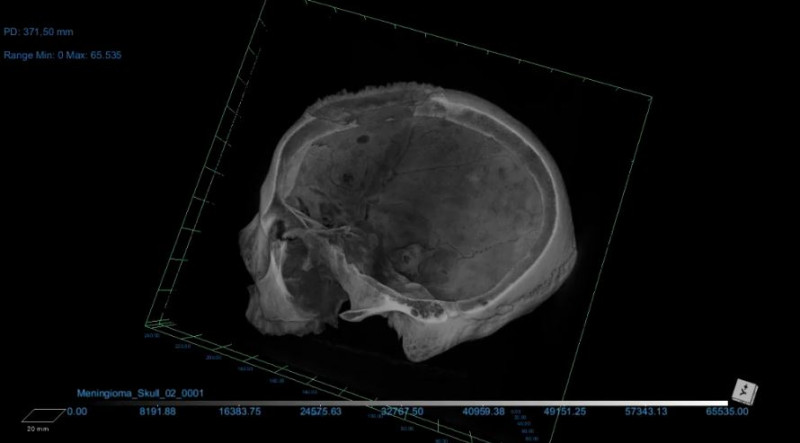New evidence from a more than 4,000-year-old skull reveals that ancient Egyptian doctors tried to treat certain cancers with surgery
A milestone in the history of medicine is new evidence from a skull more than 4,000 years old in ancient Egypt, which bears signs of surgery to remove a tumor.
Cancer is often considered a disease of modern times, however, medical texts from ancient Egypt show that healers of the time were aware of the condition. New evidence from a more than 4,000-year-old skull reveals that ancient Egyptian doctors tried to treat certain cancers with surgery.
The skull belonged to a man who was about 30 to 35 years old when he died and is in the collectionor Duckworth Laboratory at the University of Cambridge in the United Kingdom. Already, since the middle of the 19th century, scientists have studied the surface of the skull that bears scars, but also multiple lesions that they believe are due to bone damage from malignant tumors. Archaeologists have ranked the skull as one of the oldest evidence of malignancy in the ancient world, dating between 2686 B.C. and 2345 BC
The resulting new evidence came to light when researchers recently took a closer look at the tumor scars with a digital microscope and micro-computed tomography (CT) and they found signs of removal around the tumors, which suggest that sharp metal instruments had been used to remove the lesions. The scientists reported the findings in the journal Frontiers in Medicine.
“It was the first time humanity had surgically treated what we now call cancer,” said study author Dr. Edgard Camaros, professor in the history department at the University of Santiago de Compostela in A Coruña, Spain.
However, it remains unknown whether the therapists tried to remove the tumors while the patient was still alive or whether the tumors were removed after death for analysis, Kamaros told CNN.
“If these signs were made when the person was alive, we’re talking about some kind of treatment directly related to the cancer,” he said. But if the marks were made after death, “it means it’s an autopsy to check for cancer.” Either way, “it’s amazing to know they had a surgery,” Kamaros added. “But we can’t really distinguish between treatment and autopsy.”
Medicine in Ancient Egypt
Medicine in ancient Egypt, documented extensively in medical texts such as the Ebers Papyrus and the Kahun Papyrus, was undeniably complex, and the new findings provide important, direct evidence of that knowledge, said Dr. Ibrahem Badr , associate professor in the department of antiquities restoration and conservation at Misr University for Science and Technology in Giza, Egypt.
“We can see that ancient Egyptian medicine was not solely based on herbal remedies like medicine in other ancient cultures,” said Badr, who was not involved in the new research. “It was based on surgical practices.”
But while this evidence from antiquity has already been studied in the 19th and 20th centuries, 21st-century technologies like those used in the new study are revealing previously unknown details about the medical arts of ancient Egypt, Badr added. .
“The research provides a new and solid direction for re-evaluating the history of medicine and pathology among the ancient Egyptians,” he said. The study authors’ methods “move their results from the realm of uncertainty and archaeological possibility into the realm of scientific and medical certainty.”
The scientists also found cancerous lesions on a second skull from the Duckworth collection, which dates to 664 BC. to 343 BC, and belonged to an adult woman who was at least 50 years old. The team found three lesions in the sample where malignant tumors had destroyed the bone.
Unlike the previous skull, the second bears no signs of surgery associated with the disease. But the woman’s skull bears old fractures, which have healed, indicating previous successful medical intervention for head injuries. “This person survived for many years after this trauma,” Kamaros added.
Source :Skai
I am Frederick Tuttle, who works in 247 News Agency as an author and mostly cover entertainment news. I have worked in this industry for 10 years and have gained a lot of experience. I am a very hard worker and always strive to get the best out of my work. I am also very passionate about my work and always try to keep up with the latest news and trends.












